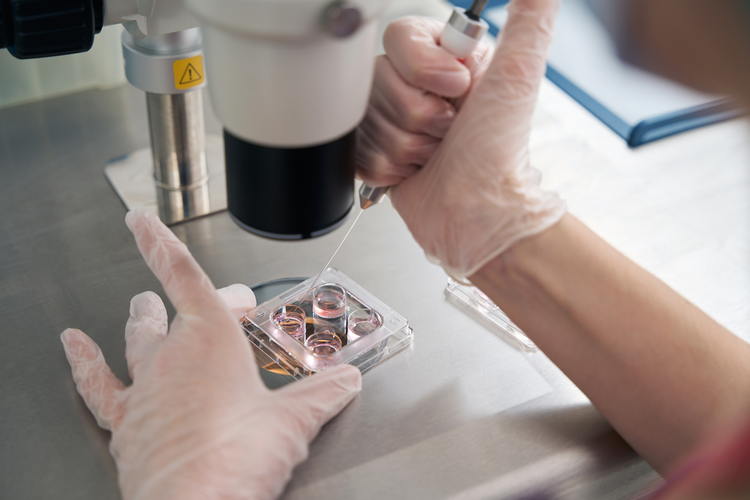Brain Organoids as Models: Advantages and Limitations
Recapitulation of Developmental Processes
Brain organoids derived from human pluripotent stem cells (hPSCs) can recapitulate early developmental processes, such as neurogenesis, gliogenesis, and the formation of cerebral cortical layers. These organoids exhibit key features of the human brain, including diverse neuronal subtypes, synaptic connections, and some degree of functional activity, providing a valuable model for studying human-specific aspects of brain development and neurodevelopmental disorders.
Key Technical and Biological Challenges in Modeling Brain Aging
-
Temporal Constraints
- Culturing Duration: Traditional brain organoids are typically cultured for periods ranging from a few weeks to several months. However, the human brain's aging process spans several decades, involving cumulative effects of various cellular and molecular changes.
- Accelerated Aging Models: Some studies have attempted to induce accelerated aging in organoids using factors such as progerin (a truncated form of the lamin A protein associated with Hutchinson-Gilford progeria syndrome). However, these models do not fully recapitulate the gradual and multifactorial nature of normal aging.
-
Complexity of Aging Processes
- Neuronal Loss and Synaptic Changes: Aging is characterized by selective neuronal loss, changes in synaptic density, and plasticity. Organoids lack the longevity to model these changes accurately. Furthermore, the synaptic architecture in organoids is still primitive compared to that of an aged brain.
- Neuroinflammation: Aging brains exhibit chronic low-grade inflammation driven by microglial activation and astrocytic changes. While recent advancements have enabled the inclusion of microglia in brain organoids, replicating the chronic and systemic nature of neuroinflammation remains challenging.
-
Epigenetic and Transcriptomic Changes
- Epigenetic Drift: Aging involves extensive epigenetic alterations, such as DNA methylation changes, histone modifications, and chromatin remodeling. Organoids, typically cultured from genetically young cells, do not naturally exhibit these age-related epigenetic drifts. Induced aging through factors like oxidative stress can cause some changes, but they may not fully mimic the epigenetic landscape of aged brains.
- Transcriptomic Alterations: Age-associated gene expression changes include upregulation of stress response genes and downregulation of genes involved in synaptic function. Organoids might not accurately replicate these transcriptomic profiles due to their limited maturation.
-
Accumulation of Cellular Damage
- Oxidative Stress: Reactive oxygen species (ROS) accumulate over time in aging cells, leading to oxidative damage. While oxidative stress can be experimentally induced in organoids, the chronic accumulation seen in aged brains is hard to replicate in vitro.
- Protein Aggregation: Aged brains often show aggregation of misfolded proteins, such as amyloid-beta and tau in Alzheimer's disease. Developing these pathologies requires not only genetic predispositions but also prolonged exposure to pathological conditions, which is difficult to achieve in the short lifespan of organoids.
-
Systemic Factors and Microenvironment
- Vascularization: Aging brains undergo vascular changes, including blood-brain barrier (BBB) breakdown and reduced cerebral blood flow. Organoids typically lack functional vasculature, although recent advancements in incorporating endothelial cells and generating vascularized organoids are promising.
- Systemic Influences: Aging is influenced by systemic factors such as hormonal changes, metabolic shifts, and systemic inflammation. These factors are challenging to model in isolated organoid cultures.
Strategies to Enhance Aging Modeling in Brain Organoids
-
Extended Culture Techniques
- Long-term Maintenance: Developing protocols for long-term maintenance and maturation of organoids is crucial. This includes optimizing nutrient delivery, waste removal, and structural integrity over extended periods.
-
Incorporation of Aging Factors
- Oxidative Stress and Inflammation: Introducing oxidative stressors, inflammatory cytokines, or senescence-inducing agents can help simulate aspects of the aging environment.
- Progeroid Models: Using genetic tools to induce progeroid syndromes can accelerate aging processes, although they may not fully mimic natural aging.
-
Complex Co-culture Systems
- Microglia and Astrocytes: Incorporating microglia and astrocytes in organoid cultures can provide a more accurate representation of the brain's cellular diversity and interactions, especially regarding neuroinflammation.
- Vascularization: Advances in organoid vascularization through the inclusion of endothelial cells or co-culture with blood vessel organoids can help model age-related vascular changes.
-
Genetic and Epigenetic Engineering
- CRISPR/Cas9: Utilizing CRISPR/Cas9 to introduce age-related genetic mutations or epigenetic modifications can help model specific aspects of aging.
- Epigenetic Reprogramming: Modifying the epigenetic landscape of organoid cells to reflect aged profiles can improve the relevance of aging studies.
-
Multi-omics Approaches
- Single-cell Transcriptomics: Employing single-cell RNA sequencing to analyze the transcriptomic profiles of aged vs. young organoids can help identify age-related changes.
- Proteomics and Metabolomics: Integrating proteomic and metabolomic analyses can provide insights into age-associated biochemical alterations.
While brain organoids are powerful tools for studying human brain development and disease, their current limitations in accurately representing the aged brain are significant. Addressing these challenges requires advances in culture techniques, incorporation of aging factors, complex co-culture systems, and genetic engineering. With continued innovation, brain organoids may eventually provide more accurate models for studying brain aging and age-related neurodegenerative diseases. However, until these advancements are realized, organoids will remain primarily valuable for studying early brain development and specific pathological conditions rather than the full spectrum of brain aging.

